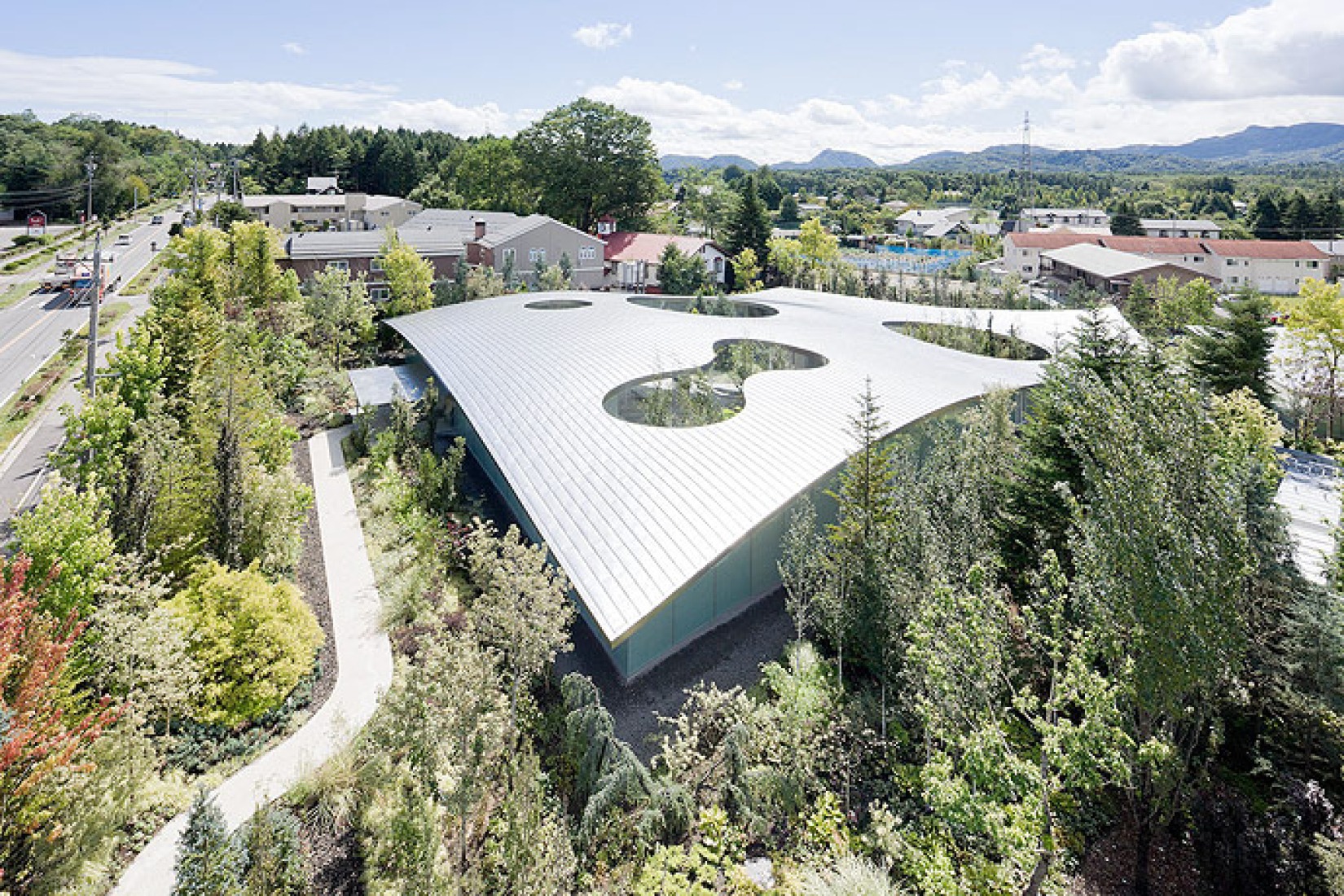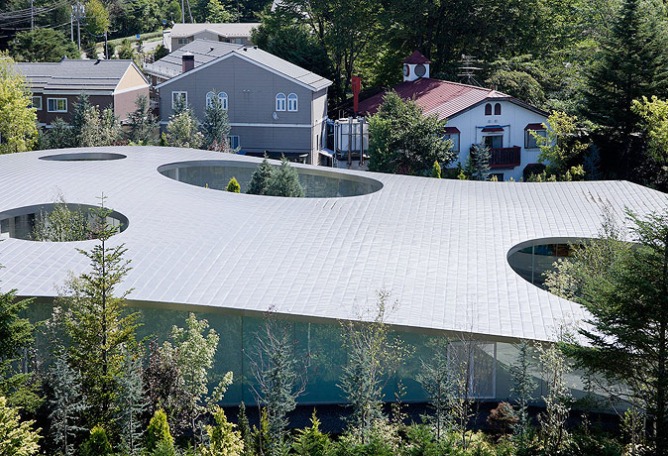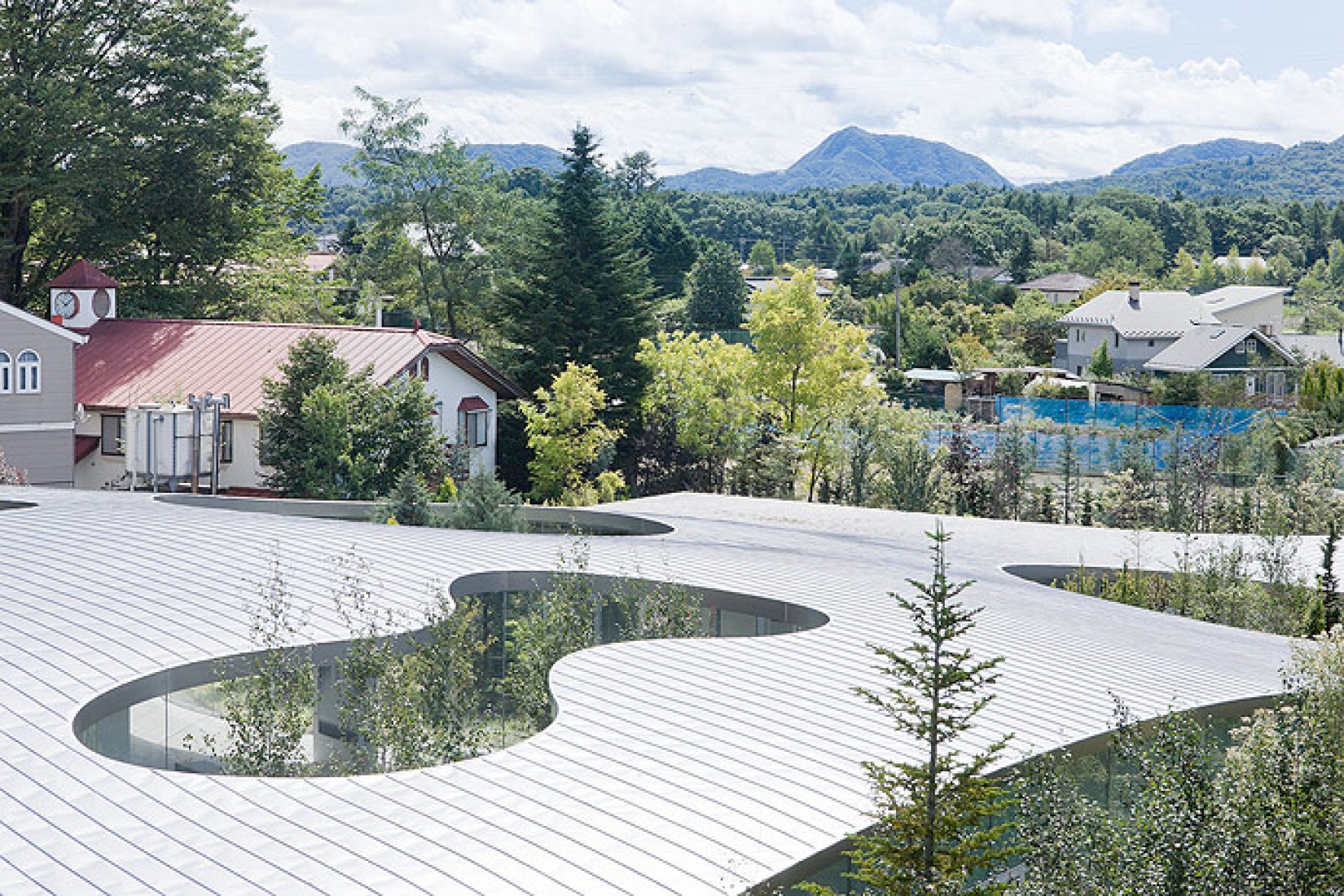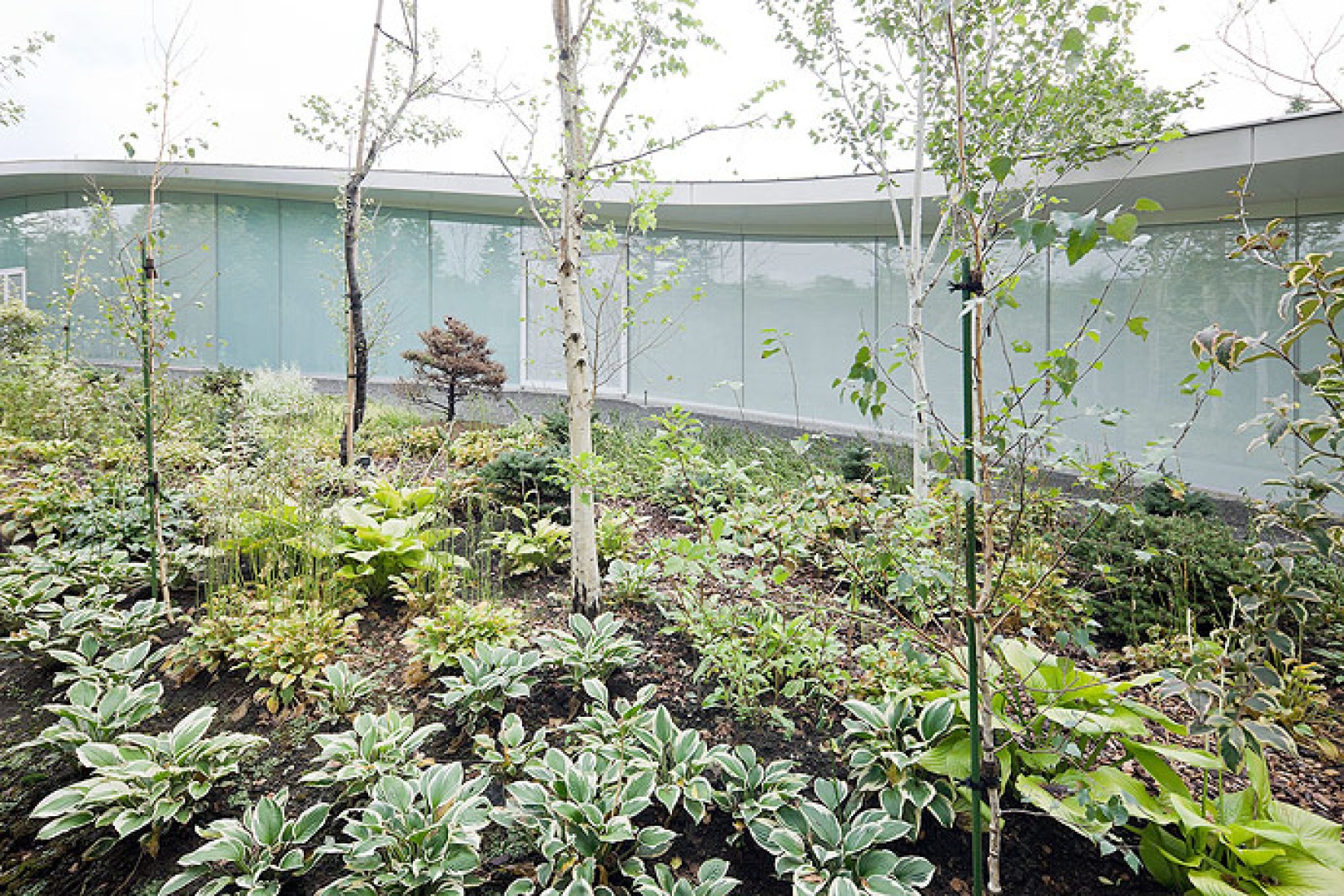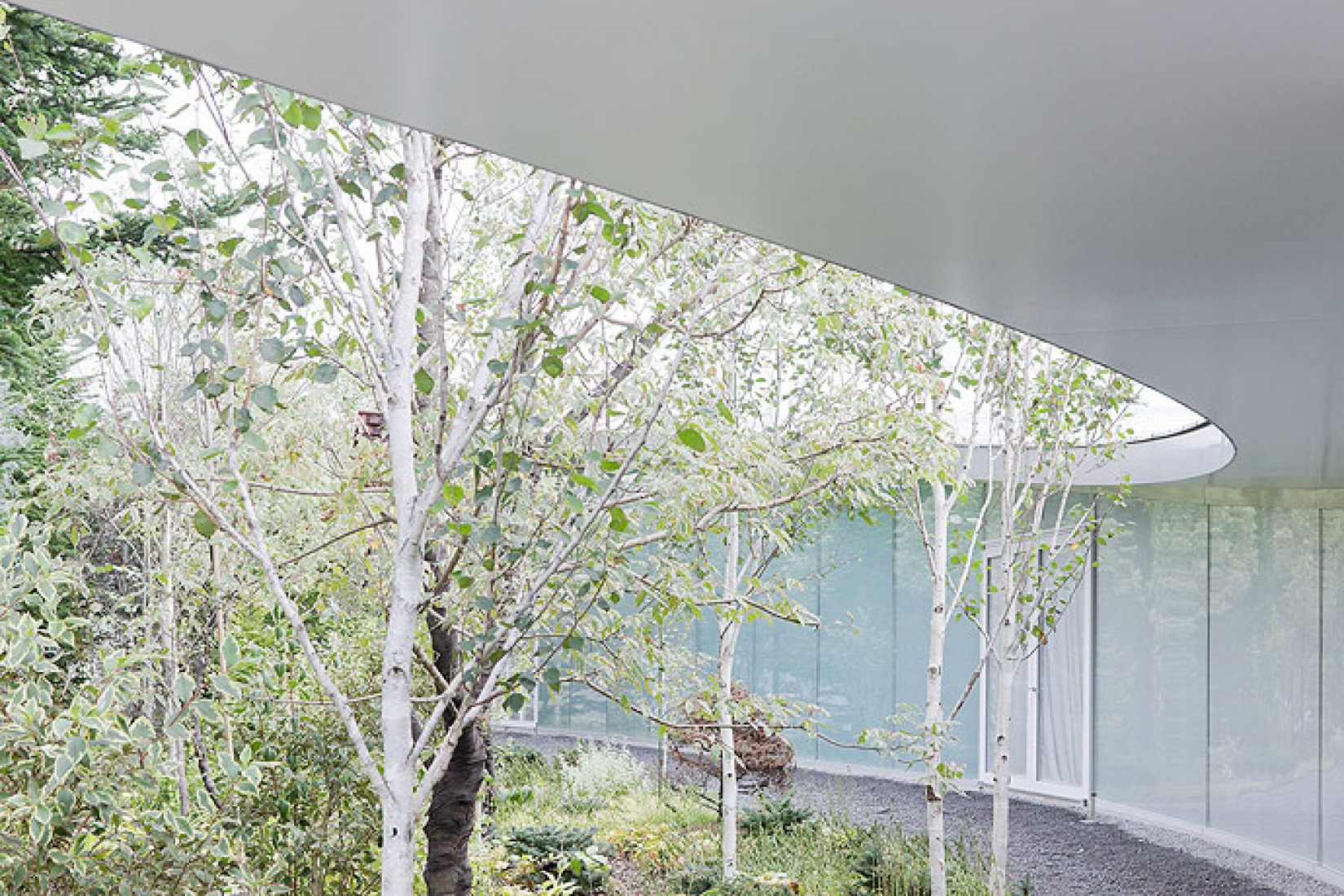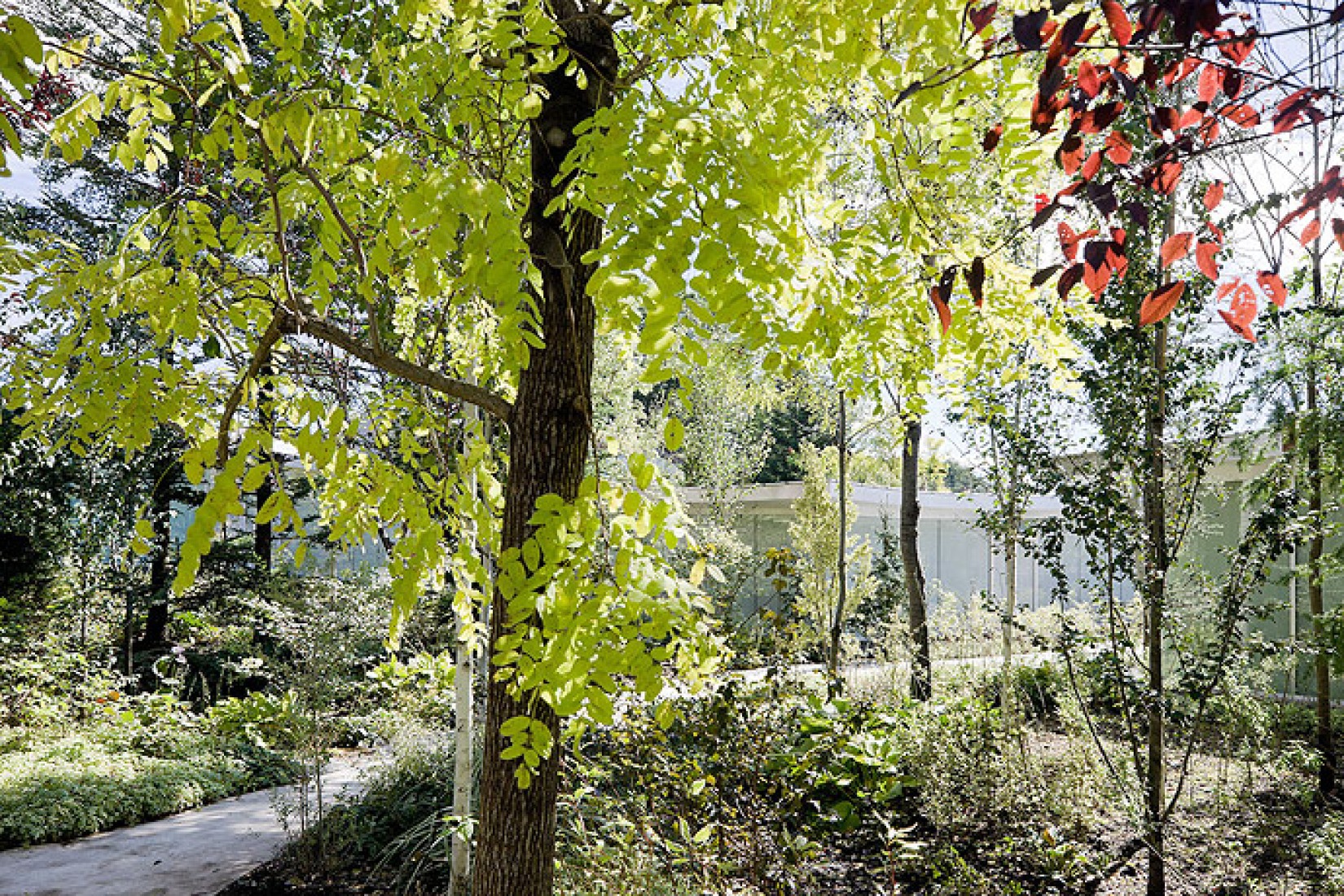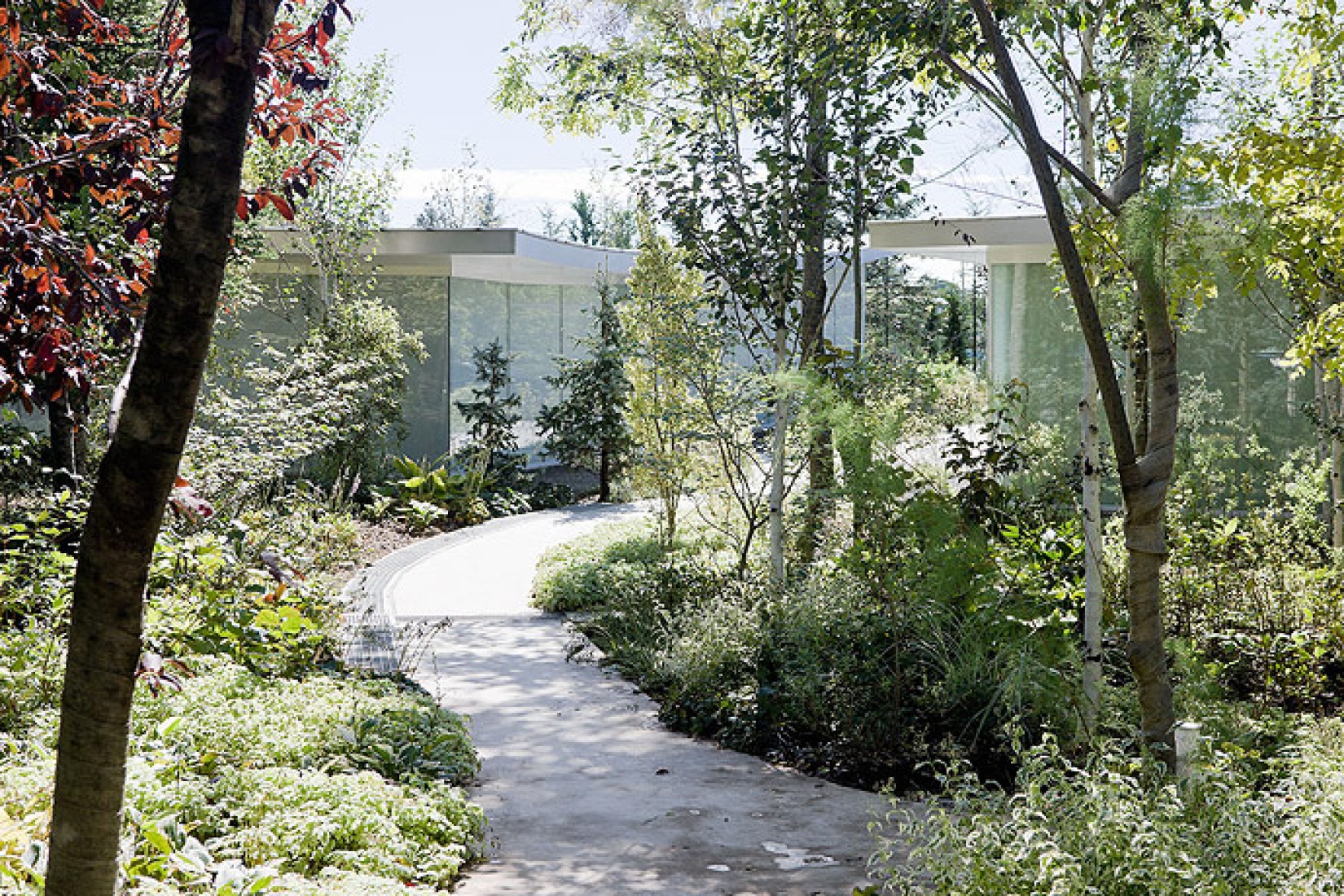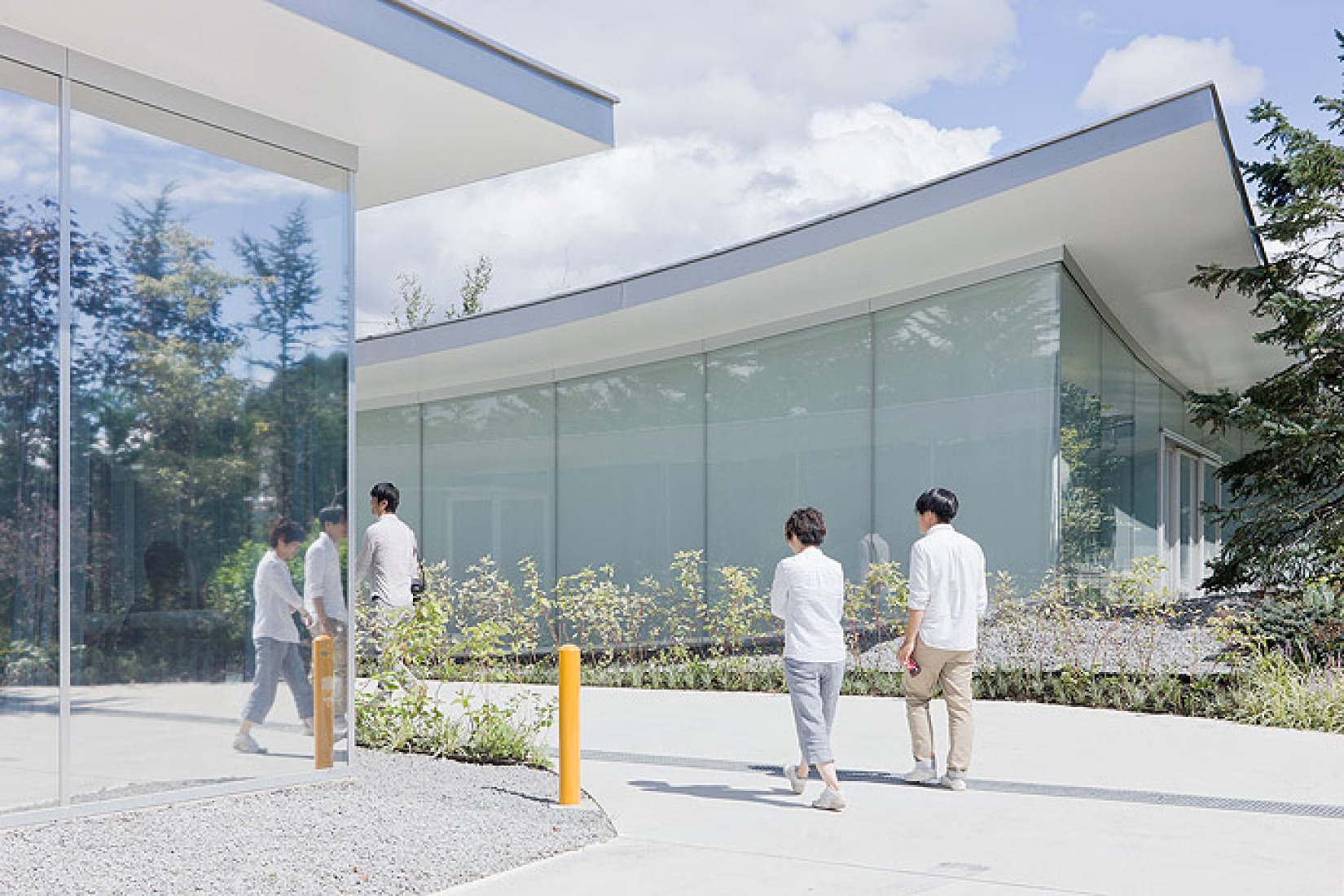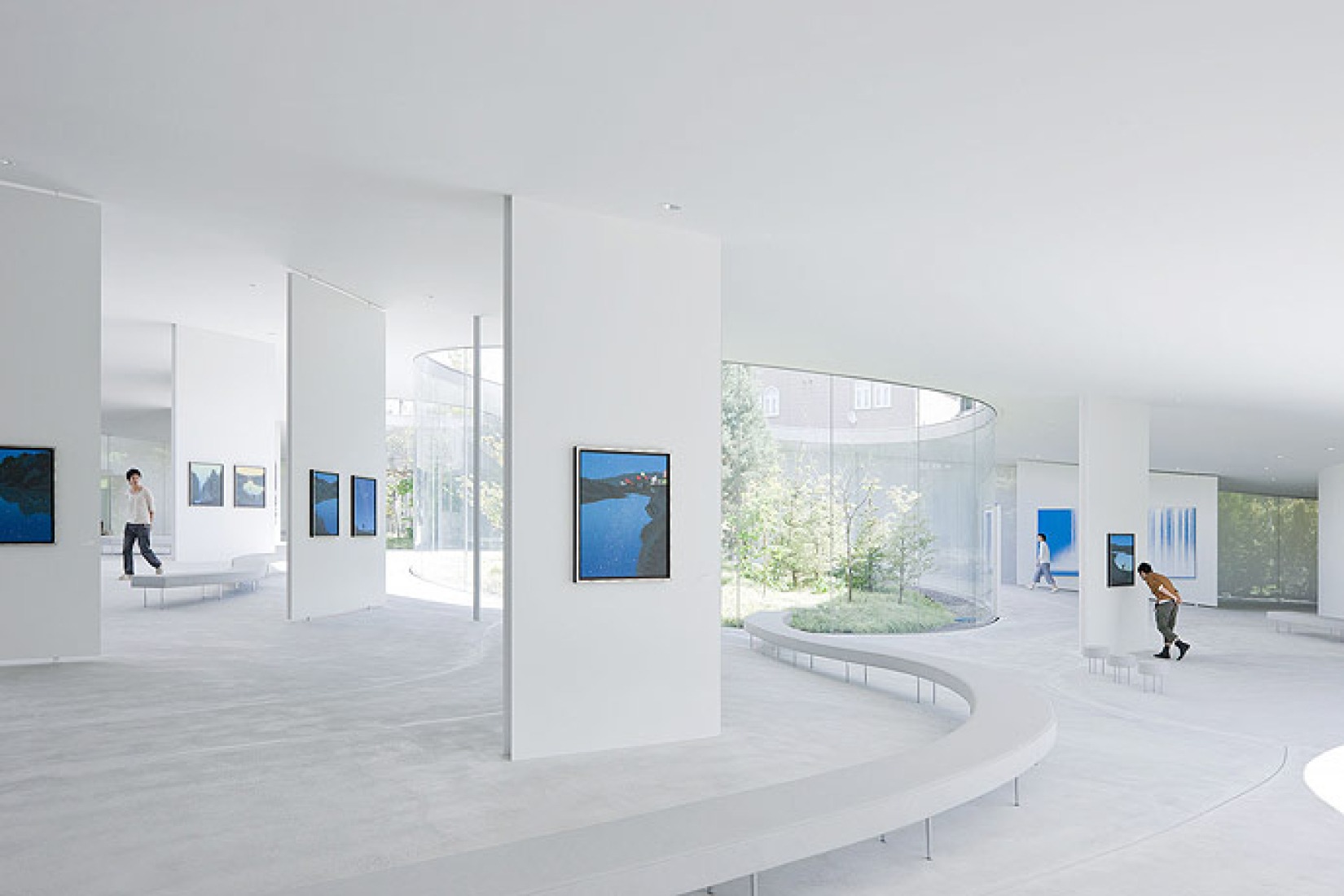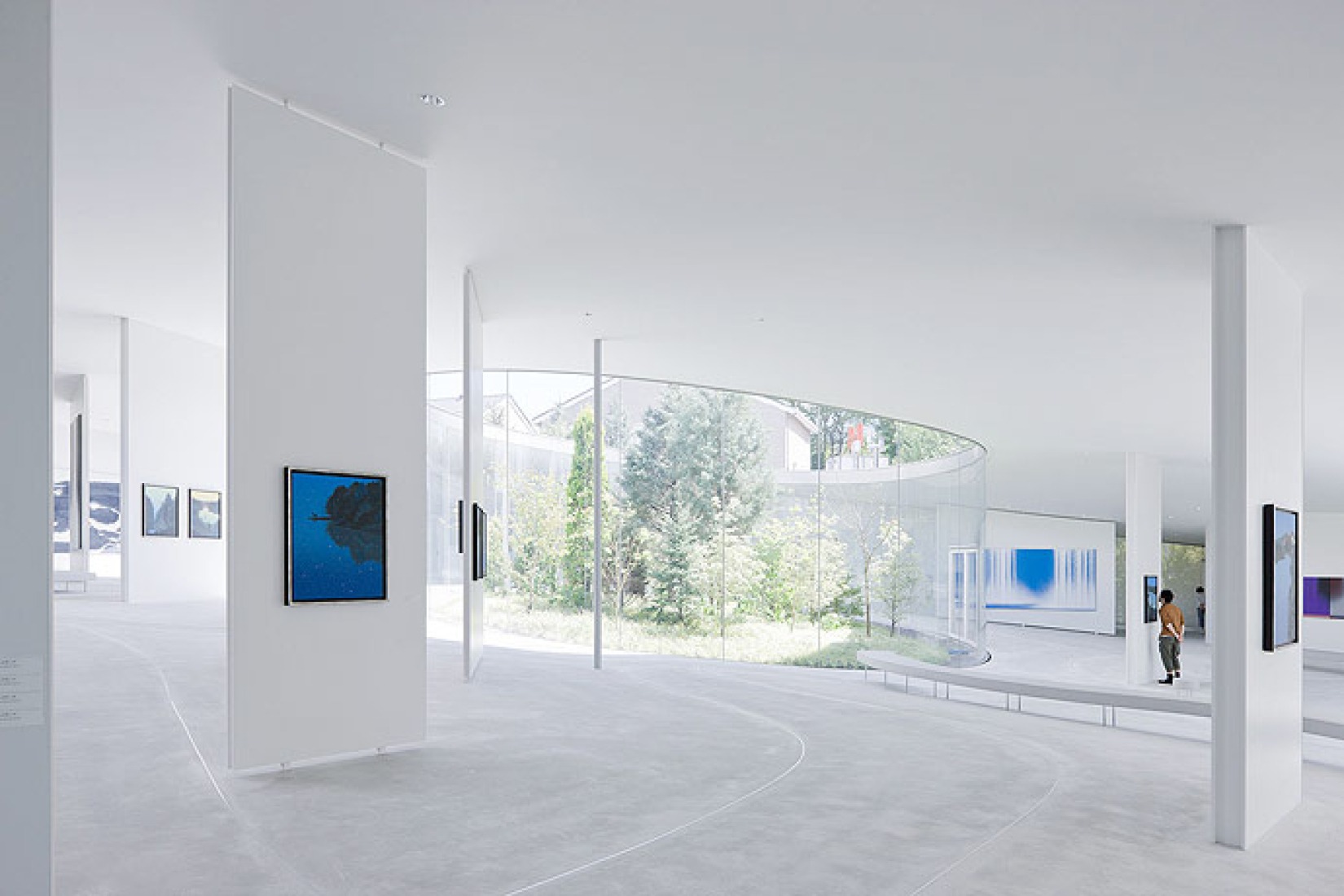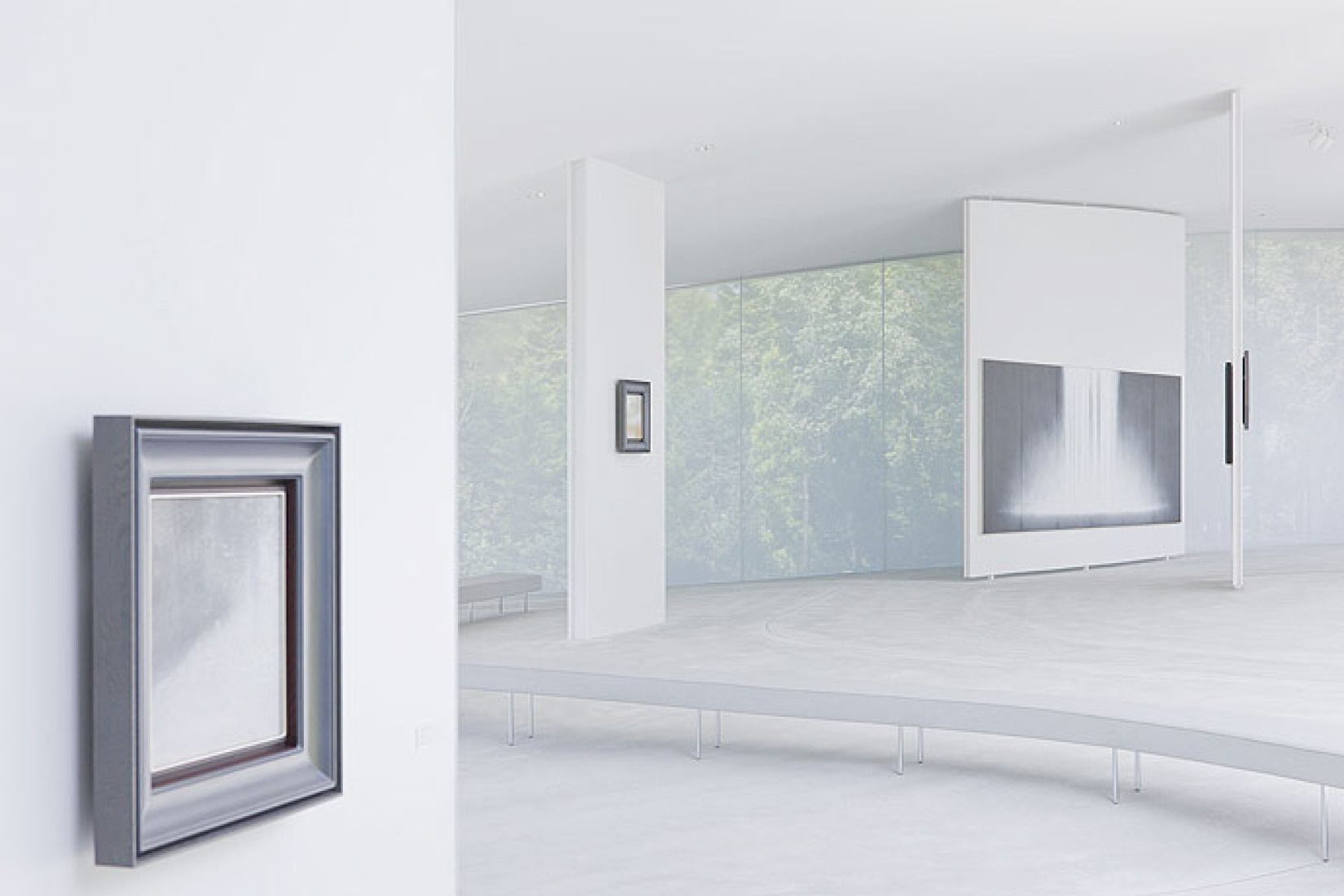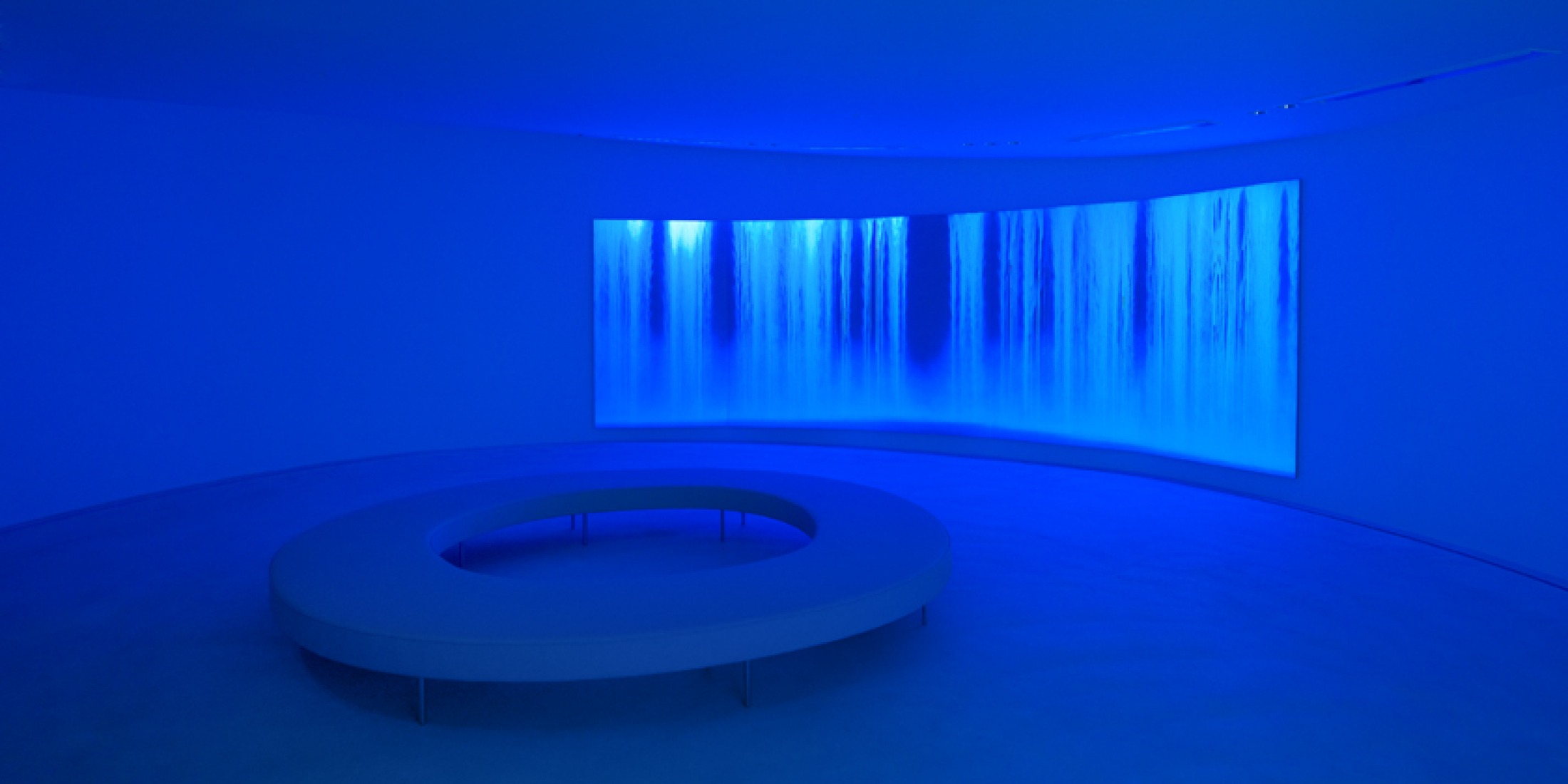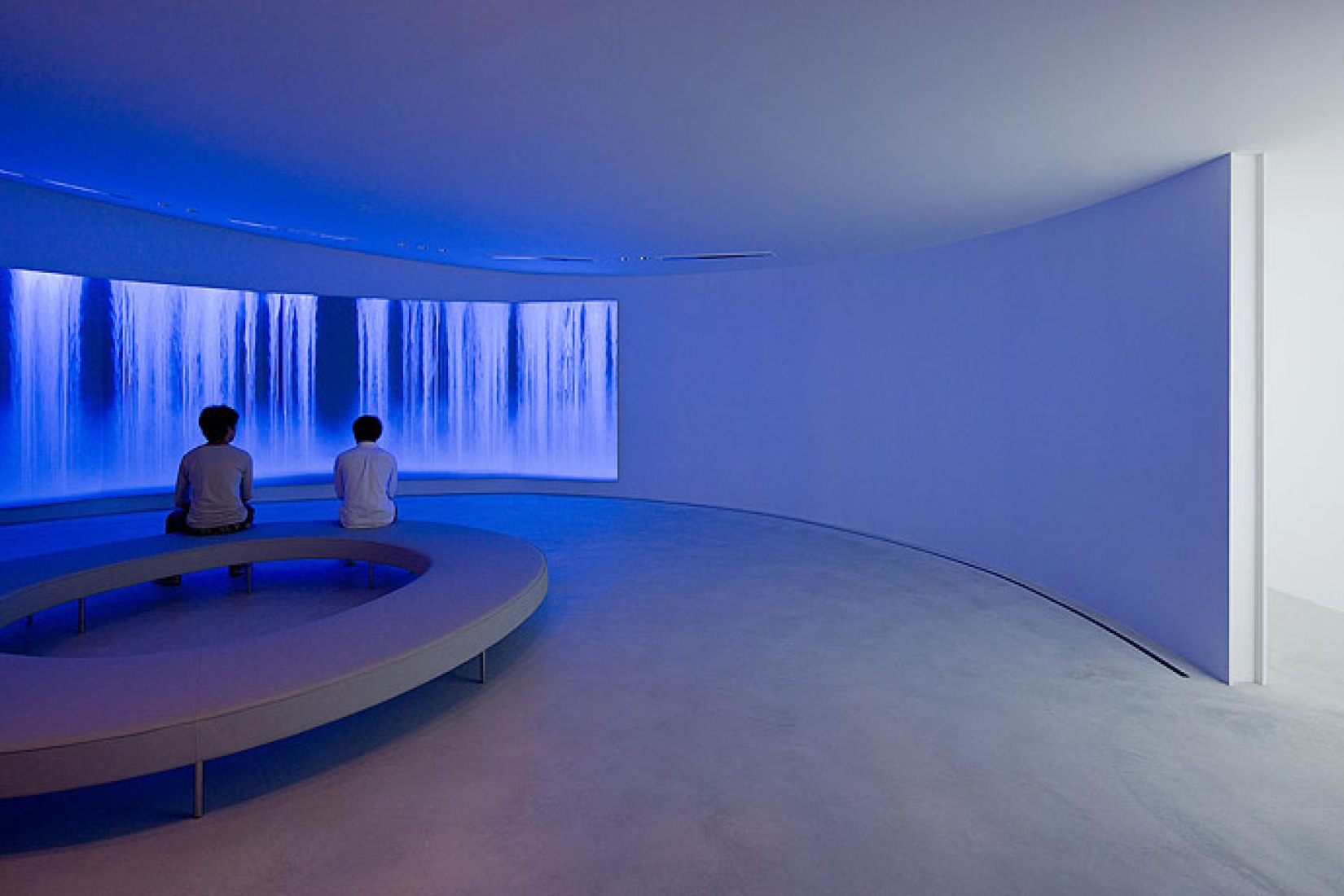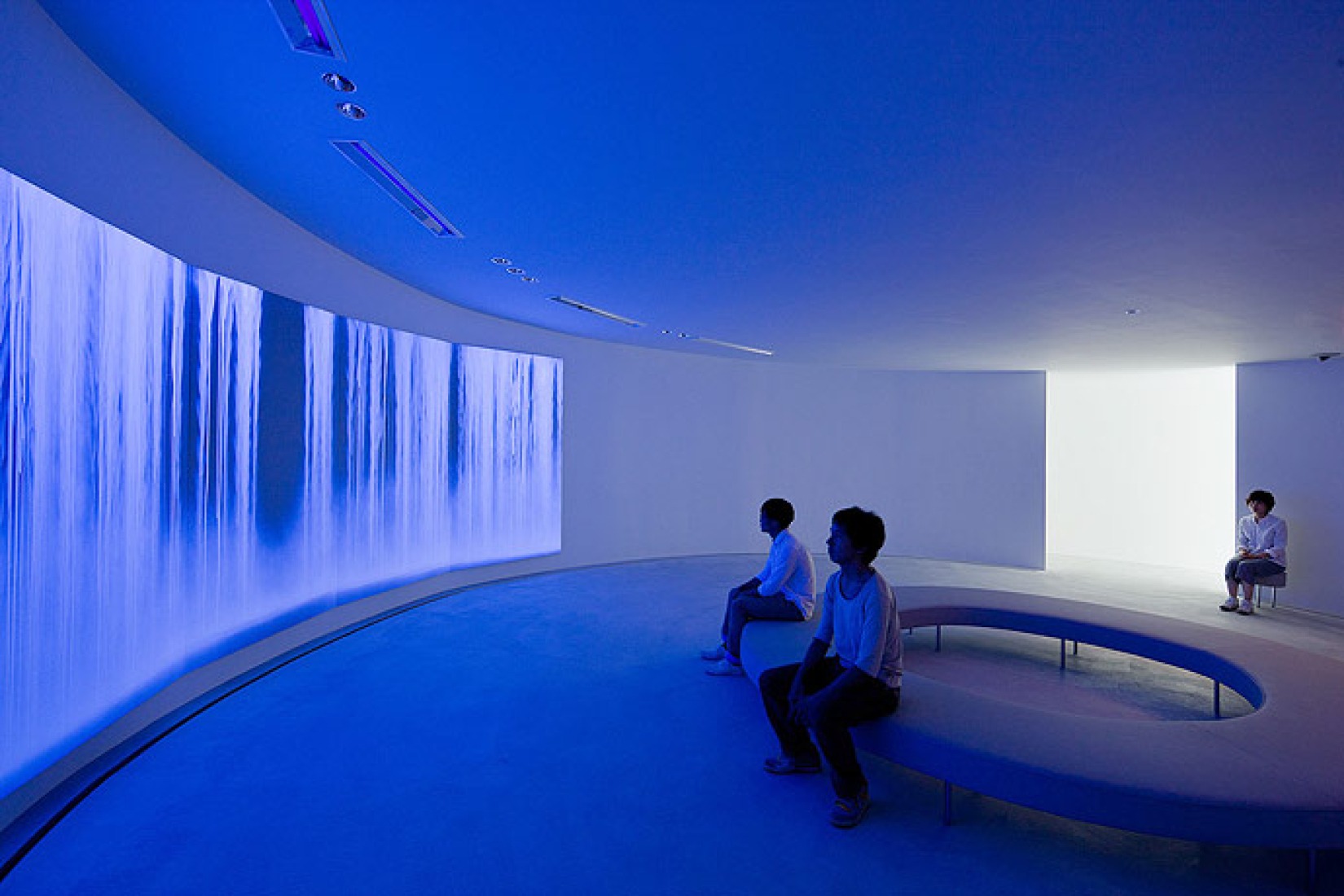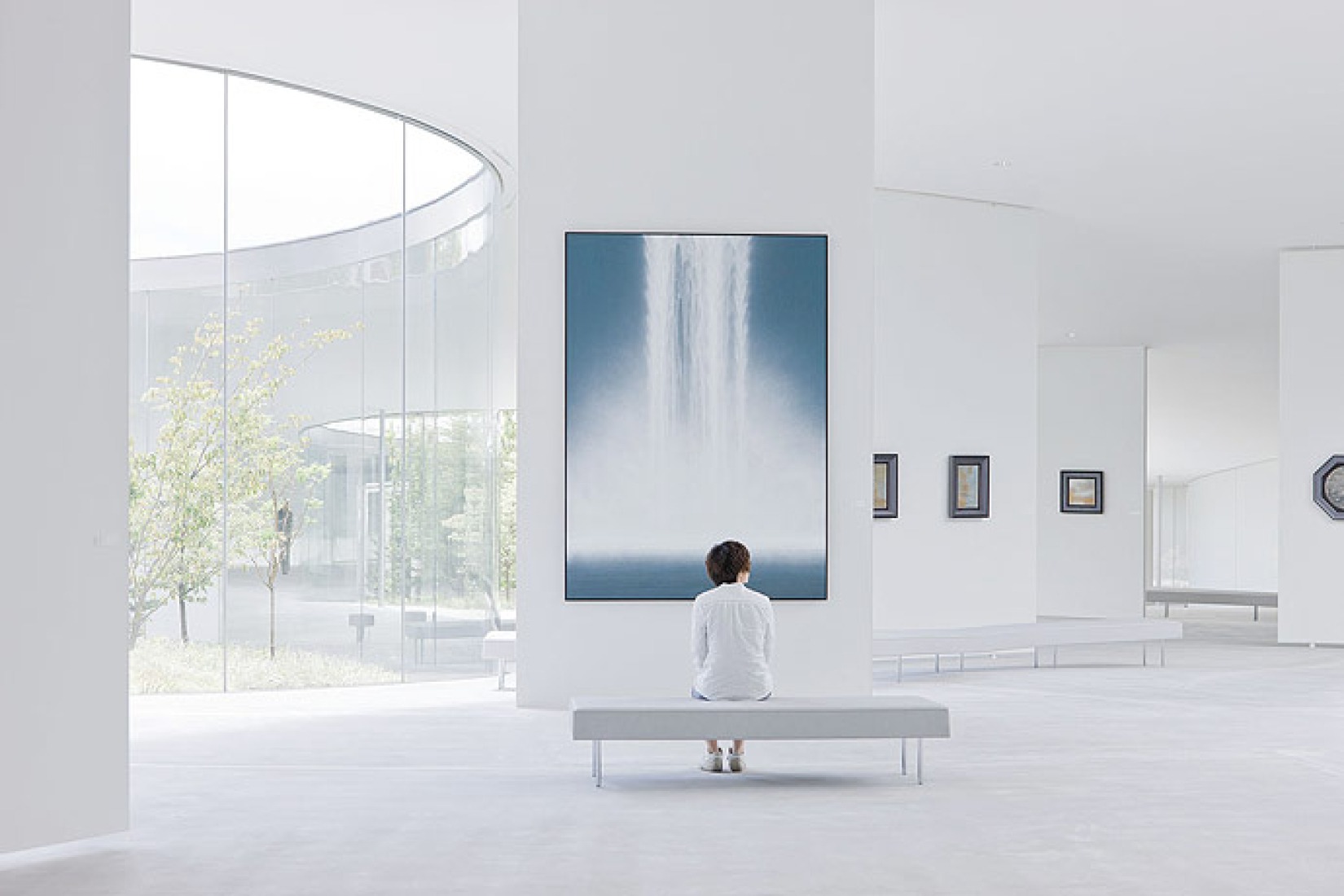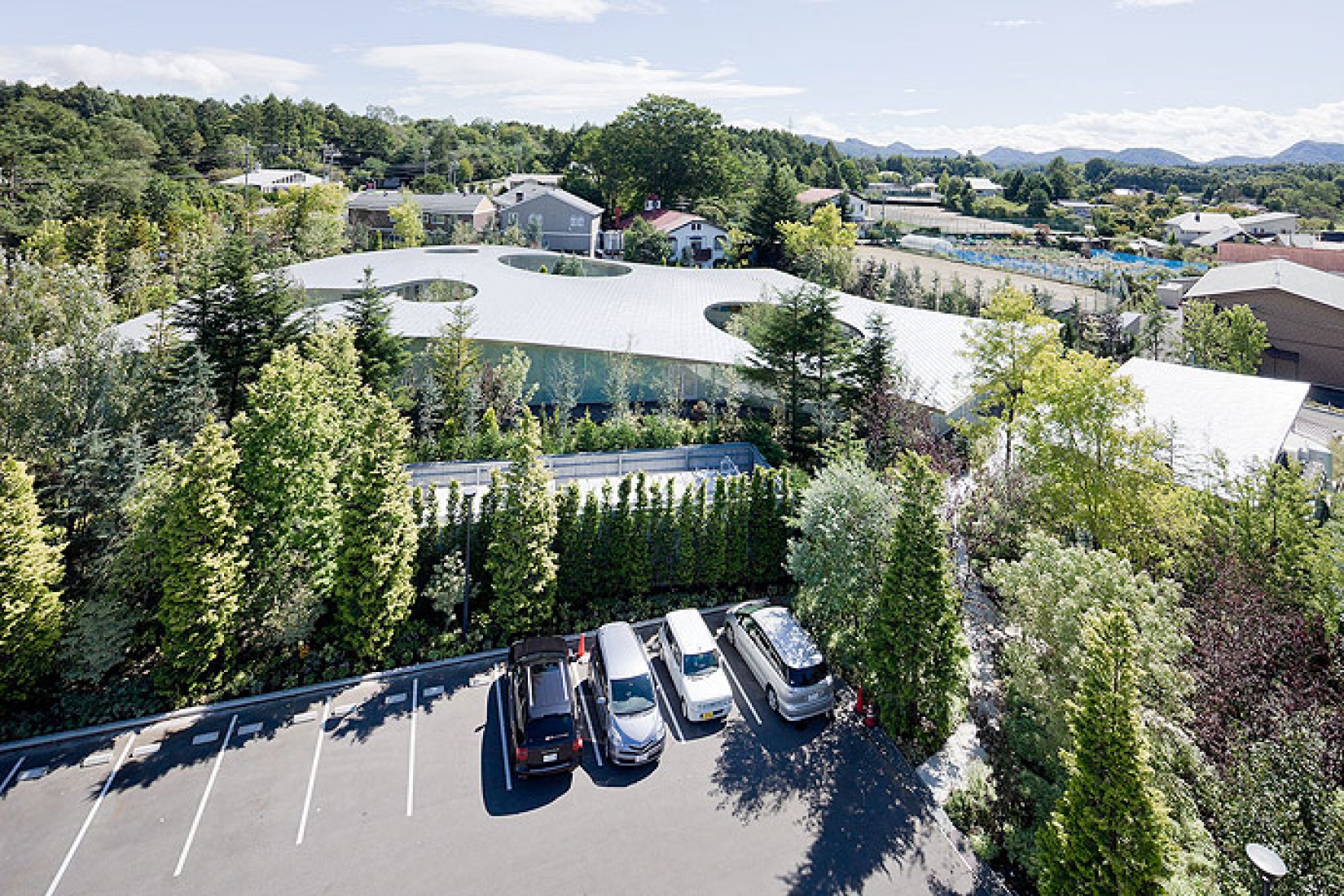Ryue Nishizawa embraced the natural contours of Karuizawa’s landscape when designing the museum, with even the floor following the natural sloping grade of the site. He choreographed a space where visitors could enjoy the feeling of becoming at one with the works of Hiroshi Senju and a forest in Karuizawa.
SANAA, his firm with partner Kazuyo Sejima, recently collected the Pritzer, the architectural world’s equivalent of the Nobel Prize. For the 3000 tsubo site (nearly 2.5 acres), the two creators Senju and Nishizawa collaborated on a dream project. Involving the planting of 150 plant varieties and numbering more than 60,000 roots, the color leaf project’s pink, yellow, purple, silver and red shrubs and grasses fan out around the site. In Karuizawa, with its pure air, gentle breezes and soft light, visitors can now experience a place of extraordinary imagination and beauty…It is my hope that visitors will come away feeling they’ve encountered a new world they’ve never experienced before."
Shigeho Shinagawa, the President of HIROSHI SENJU MUSEUM KARUIZAWA.

Model and drawings
A huge roof parallel to the surface of the land where the museum sits, perforated in some places produce courtyards, which illuminate the various interior white spaces pristine . In this case, is not provoked, the undulation of ground, as in the European project, Rolex, is simply a blanket covering the territory.
"Senju asked me to create an open, luminous space where people would observe his works, relax and spend time in contemplation. The museum, which gently hugs the natural slope of the site, has lighting controlled by deep eaves, silver screens, and UV cut glass while allowing in the greenery. The open space was designed to unite Kazurizawaʼs nature and Senjuʼs art. I wanted to create a union of park and space that felt as inviting as a private living room."
Ryue Nishizawa, architect

